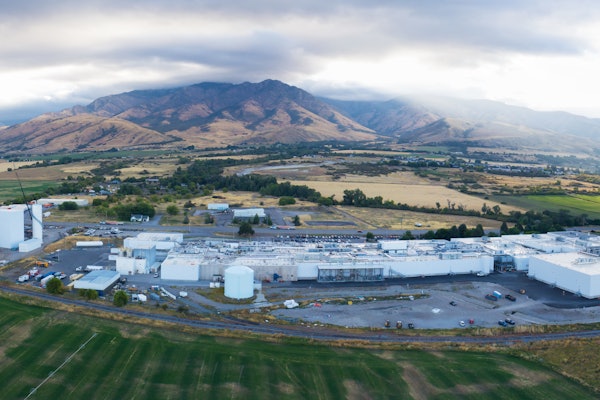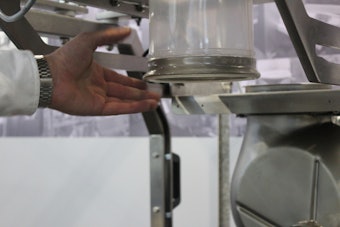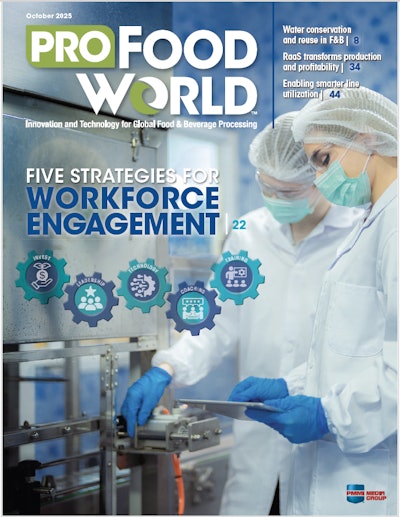But today is my birthday, so cut me a little slack. Besides, you’ll want to be aware of these developing trends, which come to us from packaging automation marketing consultant John Kowal. John has been actively engaged in packaging automation standards, trends, and technological advances for the past 15 years. He serves on the Purdue University Calumet Technology School dean’s council and PMMI Global Marketing Committee, he started SERCOS North America, he was instrumental in establishing the OMAC Packaging Workgroup, and he is the manager of the LinkedIN Packaging Machinery Group. As they used to say in the Carson era, heeeeeeeeere’s Johnny:
Welcome to 2010, the beginning of a new decade and a new economic cycle in which we’ll all benefit from pent-up demand. Still, economists see growth restrained by a job market that’s proving slow to recover.
Try telling that to Google and Apple as they battle to transform the global mobile phone market that BlackBerry ripped out of Nokia’s grip, just as Nokia plucked it from Motorola in the 1990s.
Why is this happening? Because it’s not a phone any more, it’s the communications platform for a powerful new concoction of software and hardware. Yet, the game changer is not about the technology, it’s about what we can do that we plain couldn’t before. Market share flows freely from yesterday’s leader when it loses the marketing vision and the technological edge at the same time.
This scenario is equally applicable to packaging. So what’s this mean for us -- packagers, packaging machinery providers, and packaging automation specialists -- in the year ahead?
1. Operator panels will simplify OJT training, maintenance
The power of PC-based HMI will allow step-by-step video and animated instructions to operators and first echelon maintenance providers. Using portable HMI panels on long cables – similar to robotic teach pendants – operators can walk around the machine while following multimedia, step-by-step instructions to clear jams, load blanks, perform lubrication, and handle other tasks.
HMI cost is always coming down, with Atom processors now appearing on low-cost HMI and HMI merging with controllers. Now, low-end machines can enjoy the same kind of sophisticated software capabilities as high-end machinery.
This is very important in order for OEE – overall equipment effectiveness -- to proliferate across the packaging floor and into smaller enterprises. And later we’ll see how OEE will become the glue for other important developments.
2. We’ll get over the high cost of developing onboard multimedia
The hardware is cheap. The expensive part will be developing individual videos and animations. But inevitably, the first OEMs to take the leap will win some high-profile projects from those who don’t, and in short order onboard multimedia will become an expectation. A picture may be worth a thousand words, but a video is literally a thousand pictures and will prevail.
Tapping into universities, as industry does so effectively in Europe, will reduce the cost for OEMs while simultaneously developing the next generation of knowledge workers.
A perfect example is Purdue University Calumet, where a new packaging resource center and an established computer graphics department are just waiting for a groundbreaking machine animation project.
Another cost mitigator will be repurposing. The multimedia files will be used for machine documentation, safety compliance, distance learning, commissioning and employee recertification. The voice-overs will be translated instead of producing manuals in multiple languages. And as a direct result, the school system will have far more realistic machinery examples for their curricula than they could possibly access today.
3. The latest consumer technology will begin to pervade packaging machinery
Already, corporate IT managers are learning that it’s counterproductive to block YouTube from their engineers searching video on the latest technologies. Webcams are helping OEMs troubleshoot problems from half a world away. We’re about to see another wave of bandwidth hit the internet to make these activities more practical and economical.
It’s no different than the revolution that brought us the Web, multimedia, and email in the 90’s. Rapidly expanding infrastructure and access mean faster everything about doing business -- like inventory turns, time to market, and problem resolution.
We will see old fashioned PLC programming become much simpler, yet more powerful. The Europeans still can’t understand why we are hooked on ladder logic. But we haven’t figured out why they take a computer science approach to controlling timers and relays.
This year, expect to see the ‘better’ of both worlds initially, as software innovators work to de-skill machine operation, first-echelon maintenance, and program modifications. This will be a harbinger. Over the next couple of years, expect HMI screens to look and operate like iPhones. When packagers and OEMs ask for a new functionality, software suppliers will respond that ‘there’s an app for that.’
4. Expect social media to mature and provide useful content
Already on LinkedIn we see serious groups such as PACK EXPO, IoPP, Packaging Machinery, and Packaging Professionals. As these groups grow, you’ll see more of a global community of practice overcoming time zones, continental divides, and corporate gatekeepers.
Social networking sites will gain better control over malicious software, and networkers on these emerging professional groups will ‘play nice’ because it’s such a simple matter for the group’s manager to block a member abusing their posting privileges.
In the current economic climate, these sites are attracting their share of job seekers and recruiters. This isn’t a bad thing, in fact, it’s one of the more useful aspects of social media right now. Making direct connections and discovering new peers worldwide is another.
These activities aren’t new – internet discussion groups and bulletin boards have been around the better part of 20 years. With resources like LinkedIn, they’re just a heck of a lot easier to use and manage.
5. An ‘EnergyStar’ rating for machinery, based on OEE
Packaging machines that go to sleep when idle and save energy. Machines that use existing servo feedback to both calculate energy usage and gently handle flimsy lightweighted packages. Machines that don’t make a single bad pack from startup through shutdown.
These are among the attributes that may populate a MachineryStar rating, similar to the EnergyStar rating on electrical equipment and appliances today. The Department of Commerce is working on a survey to identify the potential for sustainable and energy-efficient packaging machinery.
What we’re lacking are a baseline, comparability, and compatibility – to calculate and analyze energy efficiency, sustainability, quality, productivity. It’s really all the same. If we make product with less energy, we increase productivity. If we don’t make any bad products, we’re really using less energy and being more sustainable.
First we have to be able to measure these things. OEE is a great place to start. It should be on every packaging machine shipped. It should be retrofitted into every packaging line in existence. It should be implemented using standards like PackML and Ethernet.
MachineryStar, if implemented, could provide yet another economic incentive to do what we already know we should be doing.
6. International partnerships will cross traditional lines
In the packaging machinery industry, it used to be that competitive lines were drawn by nation, continent, and hemisphere. Somehow a foreign competitor caused us to circle the wagons but not counterattack by exporting.
2010 will mark the beginning of new partnerships that make these boundaries obsolete. Just as we have a world economy, we have a world supply chain for packaging machinery.
Expect groundbreaking alliances between North American, European, Asian, Indian, and Latin American machine builders to merge innovation with value into a complete packaging line solution.
Expect a new breed of entrepreneurial, multinational automation provider to serve as the glue here -- to make the connections, help perform the due diligence, and deliver the technologies and global support networks that packagers will require.
Not a matter of ‘if’ but ‘who’ will deliver these innovations
The only things keeping machine builders and automation suppliers from getting together and offering all these capabilities are tolerance for risk and access to capital.
The technologies are there, now, along with the business case for those willing to share the work and knock on the door of the Chief Change Agent at any of several multinational consumer products companies.
Somebody’s going to do it, and my money is going to be on them.





















